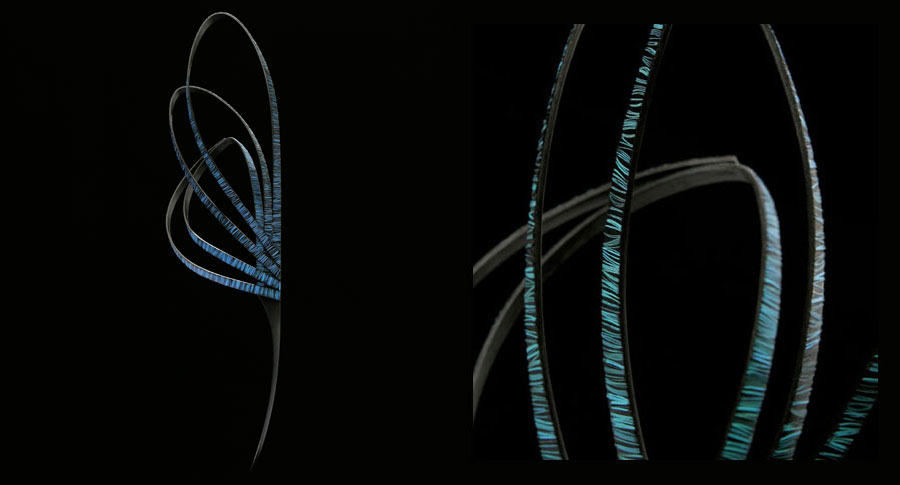Beaming with pride, it is my honor to announce that Jessica Beauchemin

has won the Prix François-Houdé in Montréal, a prize for excellence in new craftsmanship. The contest is a collaboration between the Ville de Montréal and the Conseil des métiers d’art du Québec.
(You may click on these images to see larger versions of them.)

She won it with her new series, Bestiaire,
Bestiaire I – Dasyatis sephen, 2011
Medium: Black Ebony, Movingui Veneer, Stingray polished and non polished
Finish: Linseed Oil and Beeswax
Techniques: Bending, Sculpture, Marquetry
Dimensions: 26 x 10.5 x 3 cm
Photographer: Nicolas Chentrier
She told us how adopting a personal sense of time was essential to being an artist. In Jessica Beauchemin: Collection Bestiaire and A Sense of Time, she allowed us to look inside her creative process, “À une époque où le temps est calculé en efficacité et en rentabilité, mon travail de création, axé sur le détail, la précision et la minutie, se veut un éloge du temps.”
English translation:
“In an era where efficiency and profitability define its value, my creative work eulogizes an older calculation of time, when its purpose focused on applying thorough accuracy to minute details.”
This allowed her achieve harmony as she mastered marquetry with stingray, feathers, and mother of pearl. The masterpiece hair combs she created in the silence of her convictions were recognized by the real world this year.
Congratulations to the Prix François-Houdé lauréate, the sublime Jessica Beauchemin.





